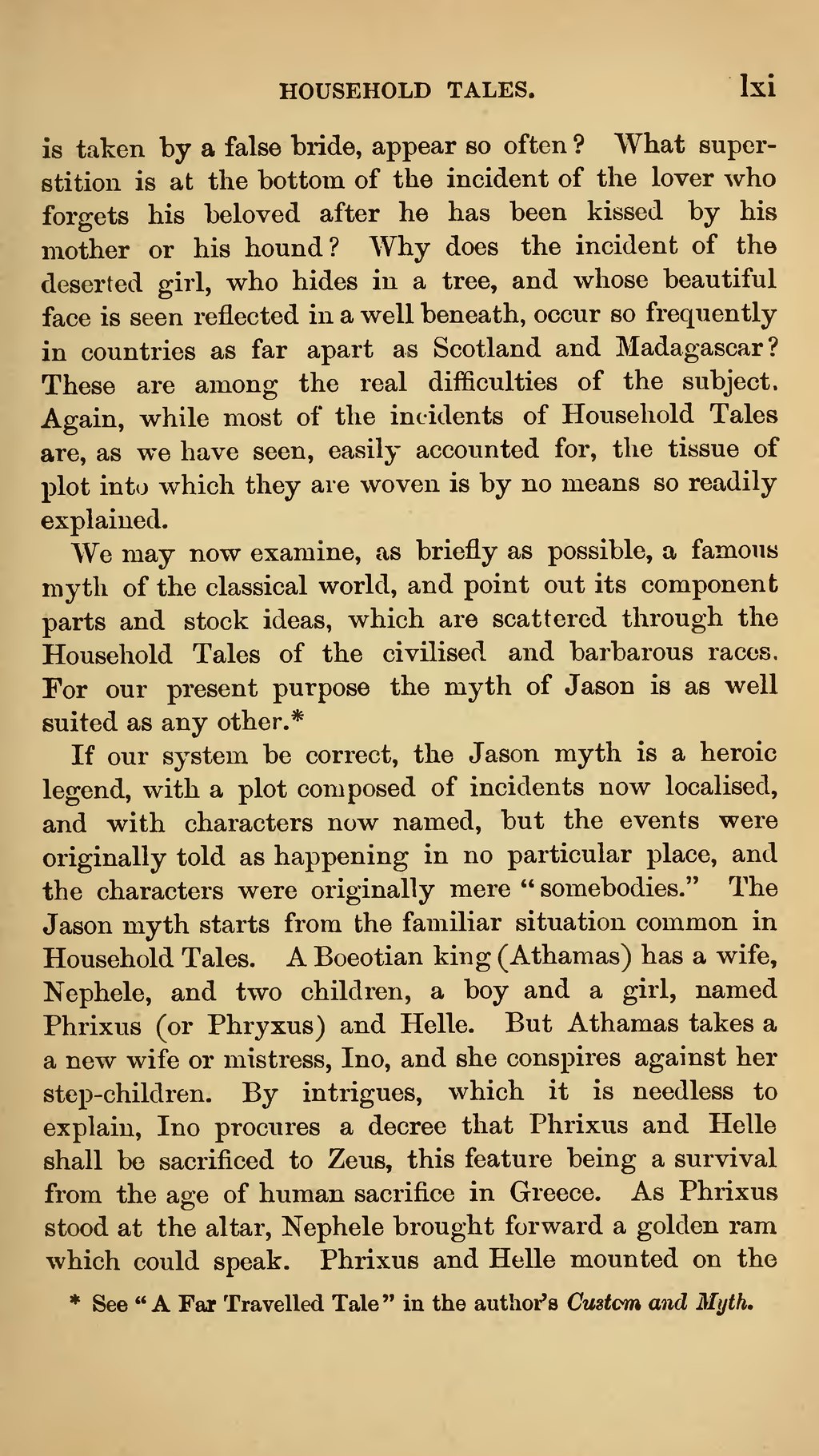is taken by a false bride, appear so often What superstition is at the bottom of the incident of the lover who forgets his beloved after he has been kissed by his mother or his hound? Why does the incident of the deserted girl, who hides in a tree, and whose beautiful face is seen reflected in a well beneath, occur so frequently in countries as far apart as Scotland and Madagascar? These are among the real difficulties of the subject. Again, while most of the incidents of Household Tales are, as we have seen, easily accounted for, the tissue of plot into which they are woven is by no means so readily explained.
We may now examine, as briefly as possible, a famous myth of the classical world, and point out its component parts and stock ideas, which are scattered through the Household Tales of the civilised and barbarous races. For our present purpose the myth of Jason is as well suited as any other.[1]
If our system be correct, the Jason myth is a heroic legend, with a plot composed of incidents now localised, and with characters now named, but the events were originally told as happening in no particular place, and the characters were originally mere "somebodies." The Jason myth starts from the familiar situation common in Household Tales. A Boeotian king (Athamas) has a wife, Nephele, and two children, a boy and a girl, named Phrixus (or Phryxus) and Helle. But Athamas takes a a new wife or mistress, Ino, and she conspires against her step-children. By intrigues, which it is needless to explain, Ino procures a decree that Phrixus and Helle shall be sacrificed to Zeus, this feature being a survival from the age of human sacrifice in Greece. As Phrixus stood at the altar, Nephele brought forward a golden ram which could speak. Phrixus and Helle mounted on the
- ↑ See "A Far Travelled Tale" in the author's Custom and Myth.
